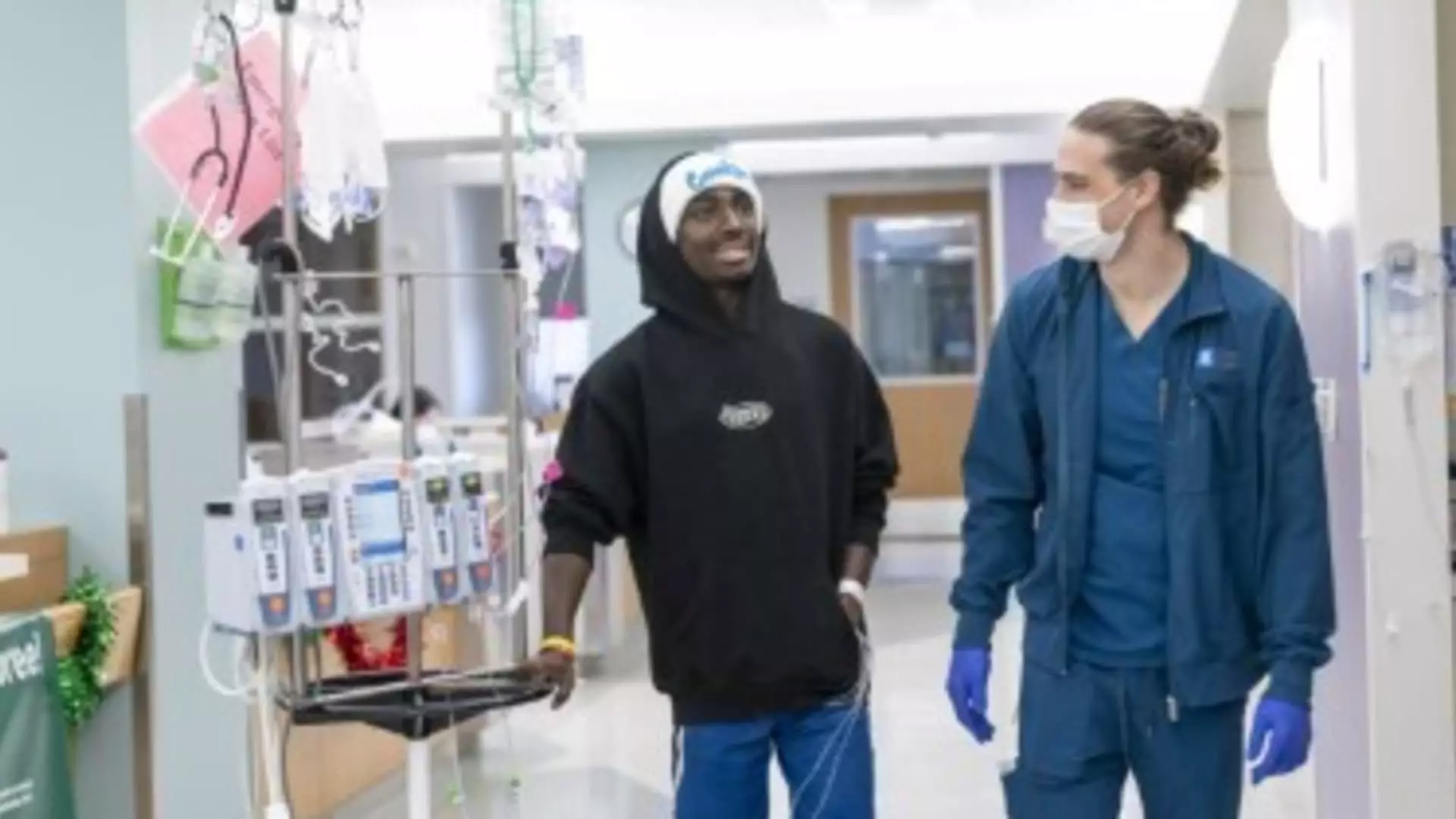Sickle cell disease (SCD) is a hereditary condition that demands urgent attention, particularly as the medical landscape evolves with innovative therapies designed to alleviate the suffering of those impacted. For individuals like Deshawn “DJ” Chow, a 19-year-old who has endured severe pain episodes since a young age, the introduction of specialized gene therapies offers a glimmer of hope. Despite the monumental costs associated with these treatments, the potential for a better quality of life cannot be overstated. In this article, we will explore the implications of new gene therapy developments for patients and their families, the challenges of cost and coverage, and the need for systemic transformations to ensure accessibility for all.
Sickle cell disease causes red blood cells to take on abnormal shapes, resulting in painful blockages within blood vessels that lead to symptoms like severe pain in various parts of the body, including the back and head. The condition predominantly affects Black individuals and is a significant contributor to health disparities within the United States. For DJ Chow, dealing with SCD meant repeatedly missing school and undergoing frequent hospitalizations. The limitations imposed by the disease have stifled his aspirations—until now.
With the approval of gene therapies like Vertex Pharmaceuticals’ Casgevy by the Food and Drug Administration (FDA), there is renewed hope for individuals like DJ. These treatments can potentially eradicate the disease at its core by utilizing advanced gene-editing techniques. However, the high price tag of these therapies—upwards of $2 million—poses a formidable barrier to widespread access.
DJ Chow’s family has been fortunate, as their employer-sponsored insurance has largely covered the expense of his therapeutic journey. Nevertheless, it’s crucial to recognize that many families are not as fortunate. The exorbitant costs associated with the new gene therapies create a disparity that is hard to ignore. The healthcare system’s complex nature complicates the process of securing coverage. Early adopters of these therapies have noted that navigating the intricacies of insurance policies can be overwhelming, often requiring healthcare providers to undertake extensive education efforts with insurers to ensure coverage approval.
Dr. Leo Wang, who treats DJ at City of Hope, highlights the systemic hurdles surrounding therapy costs and insurance approval. He expresses concern that, as the number of patients increases, the ability of insurance plans to absorb such high treatment costs may diminish. Furthermore, some state Medicaid programs face even greater challenges when addressing the affordability of these life-changing therapies.
The slow rollout of the gene therapies calls attention to broader implications for the healthcare infrastructure in the US. Currently, only a fraction of patients—less than 200—have begun treatment with emerging gene therapies like Casgevy and Bluebird Bio’s Lyfgenia. This slow uptake underscores the urgent need for a reevaluation of payment models that better accommodate the extensive needs of SCD populations.
As David Joyner, CEO of CVS Health, outlines, the industry is exploring novel payment strategies to distribute treatment costs more equitably. One suggestion includes establishing risk pools that would spread financial responsibilities across a larger network of payers rather than placing undue burdens on individual insurers or states. With more than 100,000 Americans living with SCD, the time is now to innovate and secure the necessary funding and resources to meet their needs.
In response to the high costs associated with sickle cell therapies, the Biden administration has begun developing an outcomes-based payment model through the Centers for Medicare & Medicaid Services (CMS). This includes a potential funding pool of $9.5 million for states participating in the program. However, challenges in affordability persist, particularly given budget constraints. Researchers have indicated that the 10 states with the largest sickle cell populations could face substantial financial impacts, with estimated treatment costs potentially reaching millions of dollars.
In this compelling context, we must continue advocating for comprehensive policies that ensure critical funding flows to patients and their families. As Secretary Robert F. Kennedy Jr. expressed, there is a strong basis for public support of sickle cell research and treatment innovations that can alleviate suffering.
Ultimately, DJ Chow’s journey with sickle cell disease is a microcosm of a larger narrative—a blend of hope, financial strain, and the need for systemic change. Families like the Chows experience a roller coaster of emotions as they navigate the complexities of treatment availability and insurance coverage. While challenges abound, the introduction of gene therapies signifies a transformative development in the fight against sickle cell disease.
With increased collaboration between healthcare providers, insurers, and government agencies, we can aspire to a future where high-quality treatments are accessible to all patients suffering from sickle cell disease. As we stand on the brink of these new possibilities, it is imperative that we work collectively to bridge the gaps in affordability, ensuring that no family is left without the hope that modern medicine promises.

